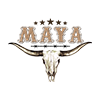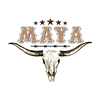DTF Transfers for Product Testing: A Sample-to-Scale Playbook Using UV DTF, Blank T‑Shirts, Hoodies & Hats — Embroidery Options and Dropshipping Fulfillment
Whether you’re launching an apparel side hustle, running an Etsy shop, or scaling a direct-to-consumer clothing brand, DTF transfers are one of the fastest, most flexible ways to get from concept to customer. This comprehensive playbook walks through everything from UV DTF basics and design prep to sampling methodologies, embroidery hybrid strategies, and dropshipping fulfillment with MAYA TX (same-day pickup in Austin, nationwide shipping, print-and-ship dropshipping). It’s written for beginners who want clear explanations and for experienced sellers who need practical, production-ready tips.
Quick overview: What you’ll learn
- Why DTF transfers (and UV DTF) are ideal for product testing and small-batch runs
- Step-by-step sample-to-scale workflow
- Garment-specific guidance for blank t-shirts, hoodies, and hats
- When to choose embroidery or a hybrid approach
- Dropshipping and fulfillment strategies using MAYA TX
- Pricing, QA, marketing, and scaling tips
What are DTF transfers and UV DTF?
DTF (Direct-to-Film) transfers are a print method where full-color graphics are printed onto a clear film, coated with adhesive powder, cured, and then heat-pressed onto garments. DTF transfers produce bright colors, fine detail, and work across many fabric types — cotton, cotton blends, polyester, performance fabrics, and more.
UV DTF is a variation that incorporates UV-curable inks or UV-assisted printing/curing steps to enhance color vibrancy, surface cure speed, and durability on specific substrates. UV DTF workflows can be especially useful when printing on mixed-material items or when a faster cure/finish is required in a high-throughput environment.
Why DTF and UV DTF are great for product testing
- Low setup cost: No screens or expensive platens—print what you need.
- High fidelity: Full-color prints and gradients reproduce accurately.
- Cross-fabric compatibility: Test the same artwork on t-shirts, hoodies, and hats easily.
- Inventory flexibility: Stock transfers or print-on-demand to minimize inventory risk.
- Fast iterations: Quick turnaround to test designs and adjust before scaling.
Sample-to-scale playbook: full workflow
Step 0 — Business goals before production
- Define validation metrics: conversion rate, social engagement, repeat rate, or pre-order interest.
- Decide test channels: Etsy product listing tests, targeted social ads, influencer promo, or local markets.
- Set a budget for samples, ads, and logistics.
Step 1 — Design preparation
- File setup: Export layered files (PNG/TIFF/PDF) at 300 DPI, size at actual print dimensions. Save a vector version for embroidery and alternative workflows.
- Color management: Work in sRGB or follow your RIP vendor recommendations; always produce print proofs and color swatches when possible.
- White underbase: For dark garments, include separate white-channel layers or request white-pass settings from your print provider.
- File variants: Create placement variants (center chest, left chest, back, sleeve, hood) to test consumer preferences.
Step 2 — Choosing blanks (selecting the right blank t-shirts, hoodies & hats)
Garment choice affects hand-feel, drape, print performance, and perceived value.
- Blank t-shirts: 100% cotton offers a soft hand and great DTG feel; tri-blends and polyester blends may need different curing and adhesive settings. Use mid-weight tees (4.3–6 oz) for broad appeal.
- Hoodies: Heavier fabric and fleece liners require calibrated pressing (longer dwell, possibly lower pressure zones). Consider zip vs pullover when placing designs near seams or zippers.
- Hats: Cap presses or formers ensure consistent adhesion. Flat-front structured caps are easiest for DTF; for premium hats use embroidery for the main brand mark.
Browse consistent, brandable blanks at MAYA TX: https://txmaya.com/blank-apparel.
Step 3 — Print samples and mini drops
- Order 5–20 physical samples across multiple fabric types and colors. Include both DTF and, if relevant, UV DTF variants.
- Run durability tests: 5–10 wash cycles, tumble-dry or hang-dry variations, and abrasion tests for high-wear zones.
- Document results: take photos, measure color delta (subjective or using a spectrophotometer), and note any adhesion or cracking issues.
Step 4 — Quality assurance and iteration
- QA checklist: registration accuracy, white opacity, edge clarity, hand-feel, wash results, and seam area performance.
- Iterate quickly: adjust RIP settings, print resolution, adhesive powder quantity, or curing settings based on QA data.
Step 5 — Small-batch launch
Move to 50–500 unit short runs to test product-market fit at scale. Use print-on-demand/dropshipping for broader market tests without stocking large inventories.
Embroidery vs DTF: picking the right finish
Both methods have pros and cons. Choosing the right finish depends on brand positioning, design complexity, and cost targets.
When to choose embroidery
- Small logos, monograms, chest and cap branding where texture and premium appearance matter.
- Durability is a priority — embroidered thread can outlast printed inks on high-abrasion items like hats.
- Higher perceived value; embroidery commands higher retail pricing.
When to prefer DTF
- Full-color, photographic, or highly detailed designs that are impractical to digitize for embroidery.
- Works well across a wide range of fabric types with consistent color fidelity.
- Faster set-up for multi-color artwork and lower per-design setup costs.
Hybrid approaches
Use DTF for large chest or back art and embroidery for small brand marks on sleeves, chest, or hats. This hybrid approach combines visual impact with premium branding and is ideal for differentiation in crowded niches. MAYA TX can support both workflows so you can produce mixed-media SKUs.
Technical tips for reliable DTF production (advanced)
- Adhesive powder: Control particle size and dosage. Too little powder yields poor adhesion; too much can stiffen the print.
- Curing: Achieve consistent curing with conveyor ovens or reliable heat presses. Monitor temperature and dwell time per fabric type.
- White underbase: Add two white passes for dark garments with heavy inks or large solid fills to avoid a dull print.
- Press technique: Use even pressure and avoid hooping or stretching the garment during pressing to prevent registration or ghosting.
- Film storage: Keep transfer films flat and in a humidity-controlled environment to prevent curl and feeding issues.
Testing and QA protocols
Standardized tests will help you compare suppliers and processes objectively.
- Wash test matrix: run 10-cycle tests with varying detergents and temperatures; photograph results after cycles 1, 3, 5, and 10.
- Wear test: simulate friction zones where prints meet the collar, cuffs, or zipper seams.
- Color stability: direct sunlight fade test or accelerated UV exposure if labeling for outdoor use.
- Documentation: keep a results log per SKU with photos, settings used, and outcome notes for continuous improvement.
Fulfillment: Dropshipping with MAYA TX
Scaling a tested product without carrying inventory is possible with print-on-demand and dropshipping fulfillment. MAYA TX provides services tailored to apparel sellers:
- Same-day pickup in Austin for local sellers or last-minute orders.
- Nationwide shipping so your brand can reach customers across the U.S.
- Dropshipping fulfillment (we print and ship for your customers) so you can automate order fulfillment and cut overhead.
- Consistent blank apparel sourcing to keep SKUs steady from sample runs to scale.
Integration tips:
- Connect your Shopify or Etsy store to your fulfillment provider via API or order-export workflows for automatic order routing.
- Set clear shipping expectations on product pages — provide real processing and transit time windows.
- Manage returns proactively: create a returns policy that reflects print customization realities.
Start fulfillment or learn more at: https://txmaya.com/dropshipping.
Pricing and profitability (detailed)
To price effectively, factor in variable and fixed costs and plan for margins that support marketing and operations.
- Unit cost components: garment cost + transfer/print cost + pressing labor + packaging + shipping + marketplace fees.
- Target margin: many small brands aim for 40–60% gross margin. For premium or limited-run pieces, higher markups are common.
- Break-even and scale: calculate break-even units including marketing CAC (customer acquisition cost). Use early runs to find average conversion and repeat buyer rates.
Marketing, testing, and growth tactics
- Fast validation: run small ad sets (Facebook/Instagram) to multiple micro-niches and analyze CPM, CTR, and purchase intent before scaling ad spend.
- Organic channels: optimize product titles and descriptions with keywords like DTF transfers, UV DTF, custom apparel, blank t-shirts, hoodies, hats, embroidery, print-on-demand, and dropshipping to improve SEO.
- Product photography: use consistent mockups and a few high-quality lifestyle shots — consider 360° or video to show texture and fit.
- Influencer and micro-influencer partnerships: trade free samples for reviews and unboxing content.
- Limited drops and scarcity: test urgency-based tactics (limited stock, pre-orders) to gauge demand elasticity.
Packaging, branding, and unboxing
Small touches in packaging can boost perceived value and encourage social shares.
- Include care instructions tailored to DTF or embroidery to reduce returns and preserve print life.
- Branded tissue, stickers, or a small thank-you card elevate a direct-to-consumer experience.
- Eco options: use recycled mailers or reusable polybags if sustainability is core to your brand messaging.
Trends & design ideas for 2025
- Retro 90s and Y2K-inspired typography and palettes remain strong across apparel niches.
- Minimalist line art and micro-logos work well on chest placements and secondary branding (sleeve tags, nape, hem tags).
- Sustainable messaging and materials: consumers expect transparency; offer organic or recycled blank options where possible.
- Localized and micro-niche designs (city-specific, hobby-specific) can outperform generic tees due to stronger buyer intent.
Common pitfalls and how to avoid them
- Skipping fabric tests: always test each garment color and material before selling.
- Underestimating shipping times: clearly state fulfillment windows and set expectations in your shop policies.
- Neglecting wash testing: without wash data you risk returns and negative reviews. Run at least a 5–10 wash cycle test before full launch.
- Poor SKU management: keep consistent garment SKUs across samples and production to avoid misprints and customer confusion.
Resources and further reading
- Printful — Print-on-demand best practices: https://www.printful.com
- Shopify Blog — Product testing and print-on-demand strategies: https://www.shopify.com/blog
- Oberlo — Seller trends and side-hustle ideas: https://www.oberlo.com
- MAYA TX DTF Transfers page: https://txmaya.com/dtf-transfers
- MAYA TX UV DTF page: https://txmaya.com/uv-dtf
- MAYA TX Blank Apparel: https://txmaya.com/blank-apparel
- MAYA TX Dropshipping & Fulfillment: https://txmaya.com/dropshipping
FAQ (concise answers)
- Is DTF durable? When produced and cured correctly, DTF is durable and holds up well to multiple wash cycles. Run wash tests to confirm per garment type.
- Can DTF go on hats? Yes — flat-front caps and structured hats are commonly printed with DTF; cap formers and proper pressing are required. For premium hats choose embroidery for the main logo.
- How does UV DTF differ? UV DTF uses UV-curable inks or UV-assisted curing to enhance surface properties and speed in certain workflows; it can improve vibrancy and cure speed but requires process know-how.
- Can I dropship with MAYA TX? Yes — MAYA TX offers print-and-ship dropshipping and nationwide shipping; same-day pickup is available for Austin customers.
Call to action — start your sample-to-scale journey
Ready to validate designs and scale your apparel business with low risk? Order sample DTF transfers, explore UV DTF options at https://txmaya.com/uv-dtf, and shop quality blank t-shirts, hoodies & hats. Use MAYA TX’s dropshipping fulfillment to print and ship directly to your customers — same-day pickup in Austin or nationwide shipping.
Start a sample run today, run quick wash and wear tests, and use the data to refine pricing, marketing, and product assortments. When you’re ready to scale, MAYA TX will handle production and fulfillment so you can focus on growth.
Get started: Order transfers, shop blanks, or contact MAYA TX for dropshipping setup — visit txmaya.com to begin.


















